Castles in England, where the adventure begins.
The castles of the British Isles have always fascinated travelers from when they were constructed to modern times. The English castles evoke images of royalty, kings, queens, princes, princesses and even ghosts. Unrivaled legend and intrigue, about 5,000 castles have been built in the British Isles since the Norman conquest. Many castles were built from wood and then rebuilt in stone. England is home to some of the most famous and most visited castles in the world.
Selected English Castles
We have selected the following castles in England in this post. You may simply click to go to your preferred castle or read it from the top down.
- Windsor Castle
- Bamburgh Castle
- Leeds Castle
- Tower of London
- Highclere Castle (Downton Abbey)
- Alnwick (Harry Potter)
- Warwick Castle
- Lindisfarne Castle
- Dover Castle
- Rochester Castle
- Arundel Castle
Castles in England exist as monuments at a time when kings built them not only as palaces, symbols of power but also fortresses to protect the inhabitants and protect the land from conflict and war. Over the centuries, many castles have fallen into ruin. Others have been preserved and some still remain inhabited to this day, even by Royalty.
Here are some castles in England that are definitely worth visiting in England, but there are many more.
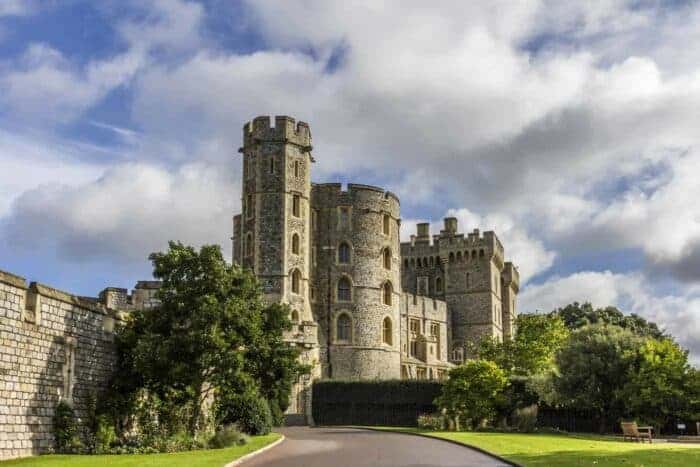
Windsor Castle
Windsor Castle
For almost 1,000 years the greatest example of castles in England, the Windsor Castle has been the proud home for the British Monarch. In fact, it is the oldest and largest occupied castle in the world today. The history of this magnificent Castle started when William the Conqueror built it around 1066. Aside from being one of the official royal residences, a venue for state visits and the preferred weekend home for the Queen, Windsor Castle is also a huge tourist attraction.
Pleasantly situated 21 miles from Charing Cross and south of the idyllic Thames, only 25 km from London lays the imposing Windsor. Set in one of Britain’s most exclusive territories, this old English town of historical significance is located within a quaint town in the Royal Borough of Windsor and Maidenhead in picturesque Berkshire.
Windsor is home to several vibrant attractions such as Cliveden House, Eton’s French Market, and Hughenden Manor in addition to Legoland and Savill Garden. Avid shoppers will also find an array of boutiques and branded goods along Peascod Street, which is Windsor’s self-proclaimed shopping district.
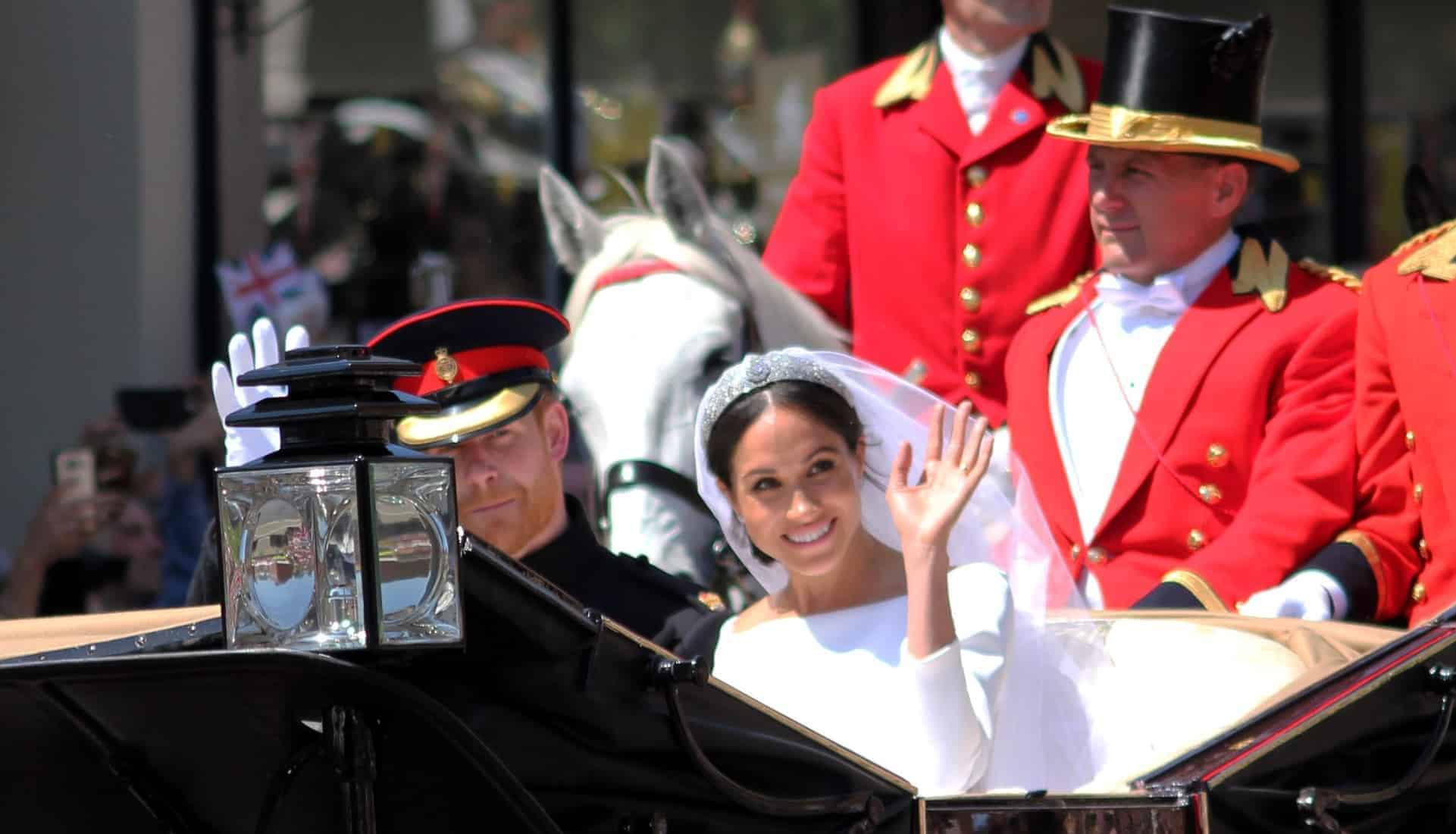
Prince Harry & Meghan Markle, Windsor, Uk – 19/5/2018: Prince Harry and Meghan Markle wedding procession through streets of Windsor then back the Windsor Castle Meghan waving to the crowd in a Givenchy dress.
Windsor’s most popular residents are undoubtedly the British royal family who has been based in its primary landmark Windsor Castle since time immemorial. Known as the world’s most extensive inhabited royal residence, Windsor Castle was first built by King William the first also known as William the Conqueror. As the official home of the Queen of England, Windsor Castle spreads out over 13 acres and the parklands surrounding the palace consist of St George’s Chapel, Frogmore House, and Gardens as well as Windsor Great Park on its northern border. Throughout the centuries each monarch has added his/her own personal touch to this royal abode, and the evolution of the Castle to its present beauty is indebted to this very fact. Originally constructed in wood and later stone, the round tower was a contribution of Henry II.
Visitors will have access to the spectacular royal apartments that have housed British Monarchs for the past 900 years as well as several semi-state rooms. Decorated by renowned painters and artisans in the likes of Rubens, Rembrandt, Gainsborough, and Canaletto the state apartments also feature furnishings courtesy of the Royal Collection. These apartments are elegantly decorated with some of the finest artwork in the United Kingdom and perhaps, in the world.
Queen Mary’s Dolls House is another must-see attraction as it is a true marvel of miniature ingenuity. The Drawings Gallery at Windsor Castle periodically exhibits historic fare from the Royal Library most often complemented by royal treasures from the same source.
St George’s Chapel with its distinct Gothic architecture is another popular venue. it is also the final resting place for ten royals like Henry VIII and wife Jane Seymour. The Windsor Castle plays a host to seasonal art exhibits. Photography, video recording, food, and drinks are not allowed inside the State Apartments.
Evening tours of the Castle are also available for a look “behind the scenes” with the aid of a seasoned guide.
You can definitely explore the Windsor Castle as an independent visitor, and you can also enjoy the exploration with an audio guide, which is included in the admission price. Audio guides are conveniently available in 8 languages. There is also the option of going with a scheduled classic guided tour that leaves near the entrance of the Castle. Exploring the Castle’s different sections usually takes 90 minutes to 3 hours.
You can definitely explore the Windsor Castle as an independent visitor, and you can also enjoy the exploration with an audio guide, which is included in the admission price. Audio guides are conveniently available in 8 languages. There is also the option of going with a scheduled classic guided tour that leaves near the entrance of the Castle. Exploring the Castle’s different sections usually takes 90 minutes to 3 hours.
Visit Windsor, see and buy tickets also

Bamburgh Castle
Selecting impressive Castles in England with a still relevant history can not be done without going to Northumberland, that has more castles than any other county in England. Many of these castles, including Warkworth, Dunstanburgh, Bamburgh, and Lindisfarne, stand guard along the dramatic coast.
Bamburgh Castle fascinates and captivates thousands of visitors from all over the world with its incredible history, spectacular views and collection of unique art pieces that tell the story of many reincarnations of Bamburgh over the centuries, from the Anglo Royal Palace – to the Victorian inventor and industrialist The First Lord Armstrong’s vision of a perfect castle.
The vast and imposing walls have witnessed dark stories of rebellion and bloodshed, bewitching myths, millionaire benefactors, and ghosts who love Bamburgh Castle so much that they never want to leave.
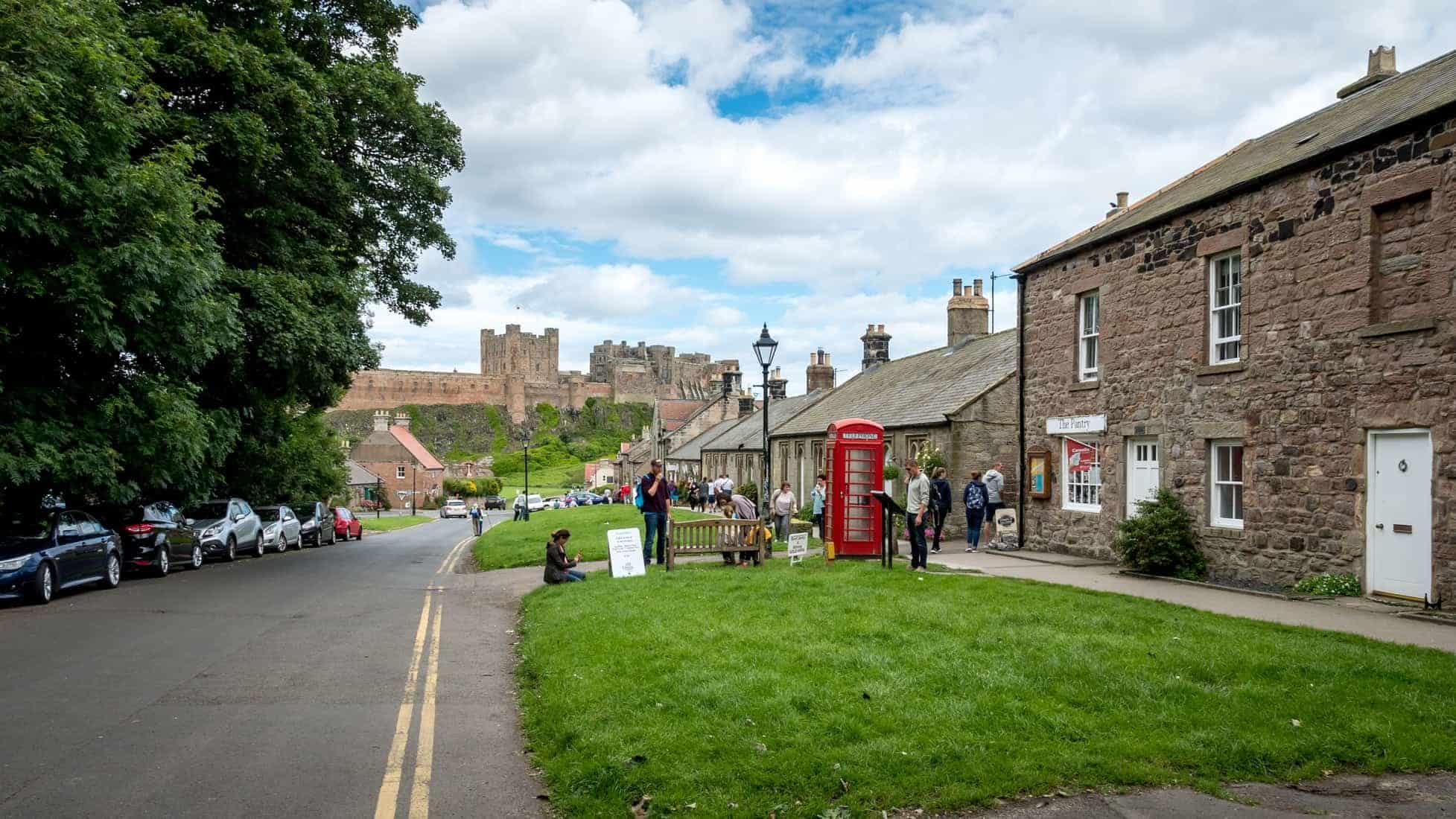
BAMBURGH: A view of the village of Bamburgh in North East England with its famous landmark castle visible in the distance.
Bamburgh – the village
Bamburgh is also a lovely small village set on the Northern stretch of the Northumberland Coast. The coast itself and the vast natural parks of Northumberland plus other see-worthy castles are excellent reasons for visiting this part of the British coastline.
It is a superb combination of history and natural beauty. Almost every part of the village has a history and a story to tell. In the early Medieval times, Bamburgh was at the center of Royal Northumbria, stretching from the Humber to the Forth. Bamburgh’s actual population is about 450 which swells in summer as flocks of tourists make their way to the village. I found the locals very welcoming and friendly.
Visit Bambourg´s beaches, Lighthouse, nice restaurants, tea rooms
Dominated by the magnificent and graceful Castle, there is plenty more to do in this small place, I.e., go see it’s the lovely sandy beach, the Museum, the Lighthouse restaurants, classic tea rooms, and shopping malls and lot more. It’s hard to believe that this small place has so much to offer, once you are there, you feel that it is slightly underestimated.
Originally from the Anglo-Saxon period, Bamburgh dominates its volcanic outcrop and the surrounding countryside for centuries.
From its humble wooden palisade to the impressive stone walls of today, it stands out as an emblematic pose on the northern coast of Umbria.
Open all year. It invites visitors to enjoy the park and cabins. From medieval cuisine to the grandeur of Victorian Kings Hall, there are 14 rooms to explore
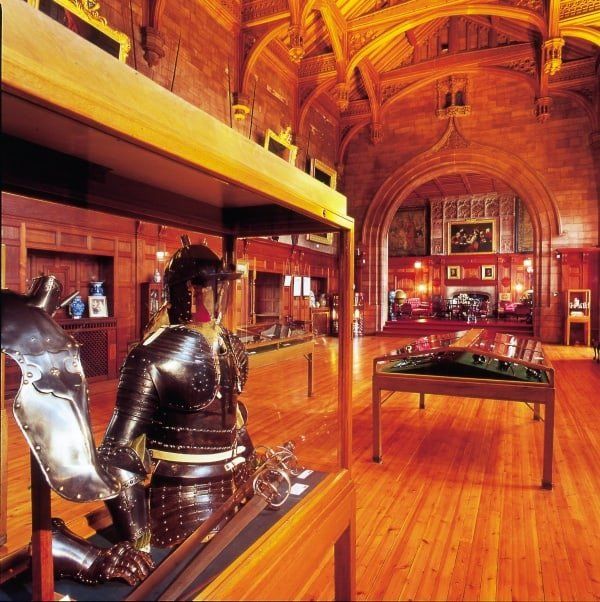
Bamburgh artifacts, armor
It contains more than 3,000 artifacts, ranging from plates and porcelain figurines to weapons and armor. With a beautiful collection of clocks, furniture, and paintings contributing to maintaining a sense of friendliness on the place.
Outside, there are ramparts with incredible views of the beaches and to the North, to Lindisfarne and inland, to the Cheviot Hills.
The old Victorian laundromat houses the Armstrong and Aviation Museum, a fascinating collection of artifacts made in the aviation field, including engines, propellers and even the wreckage of a rugged Spitfire.

LEEDS CASTLE – Panorama of Leeds castle with the moat in the foreground
Leeds Castle
Rising majestically from the calm waters of its moat, surrounded by 500 hectares of parkland and gardens, Leeds Castle is undoubtedly one of the most beautiful sites in Kent and an excellent example of English castles of its time. Called “The most beautiful castle in the world,” it’s the perfect place to spend a successful day with your family or for a romantic getaway with a loved one!
Leeds Castle has always been a palace to entertain and impress, with each generation leaving its mark. Today’s interiors are the result of the in-depth renovation of the last private owner, Lady Baillie, created in the 1920s and 1930s by leading European designers.
Each year brings a new daily program of activities and events. Whether you are passionate about porcelain, wanting to experience park wildlife, or looking for old-fashioned fun, check out our website every day for news.
Things to do in and around Leeds Castle
- Take a tour of Leeds Castle with its finely furnished rooms, its cozy little courtyard hidden behind the building and its 12th-century wine cellar. The fact that the Castle was inhabited just a few decades ago eliminates all traces of forgetfulness that is so often felt in old buildings. And some crackling flames in some chimneys only increase the feeling that the owners have only been away for a while.
- Introduce yourself to the world of flora. Leeds Castle is not only surrounded by the lake, but also by 500 acres of parks that contain the glen fairy of Wood Garden, laid out in the Mediterranean style Lady Baillie Garden and the cozy cottage Culpeper Garden.
- Take a snack on the immaculate lawn in the company of funny water birds. The graceful black swans give a special charm to the park. These beautiful snake-shaped people were delivered to Lady Baillie of Australia and have become over time a symbol of Leeds Castle.
- Strolling through the labyrinth of Leeds Castle for which about 2500 yew trees were planted. Some even claim that the labyrinth of Leeds Castle is more impressive than that of Hampton Court.
- Walkthrough the underground cave in the center of the labyrinth. The walls, covered with carved figures of mythological creatures and strange display lights, create a mysterious atmosphere.
- Visit the dog collar museum at Leeds Castle and discover how, over the last 500 years, she has changed her dog’s fashion.
- Take a picture of the local star – a bewitching white peacock, who seems to get used to the general admiration, who poses quite easily in front of the cameras.
- Enter the world of the vibrant colors of exotic birds in the aviary of Leeds Castle. Baillie, a bird lover, started collecting them in the 1950s. Today, the collection includes about 100 different species including strange spoonbills, hilarious toucans, noisy parrots, macaws, and lorikeets.
- Have an unforgettable balloon ride and immerse yourself in the contemplation of Leeds Castle and Kent County.
- Try something unusual while driving on a segway, an electronic vehicle reminiscent of a scooter, near Leeds Castle.
In addition to the entertainment mentioned above, Leeds Castle is also renowned for its seasonal events, such as jousting festivals, fall flower festivals, falconry shows, and numerous concerts with fires. Multicolored fireworks.
Visit Leeds Castle, official site
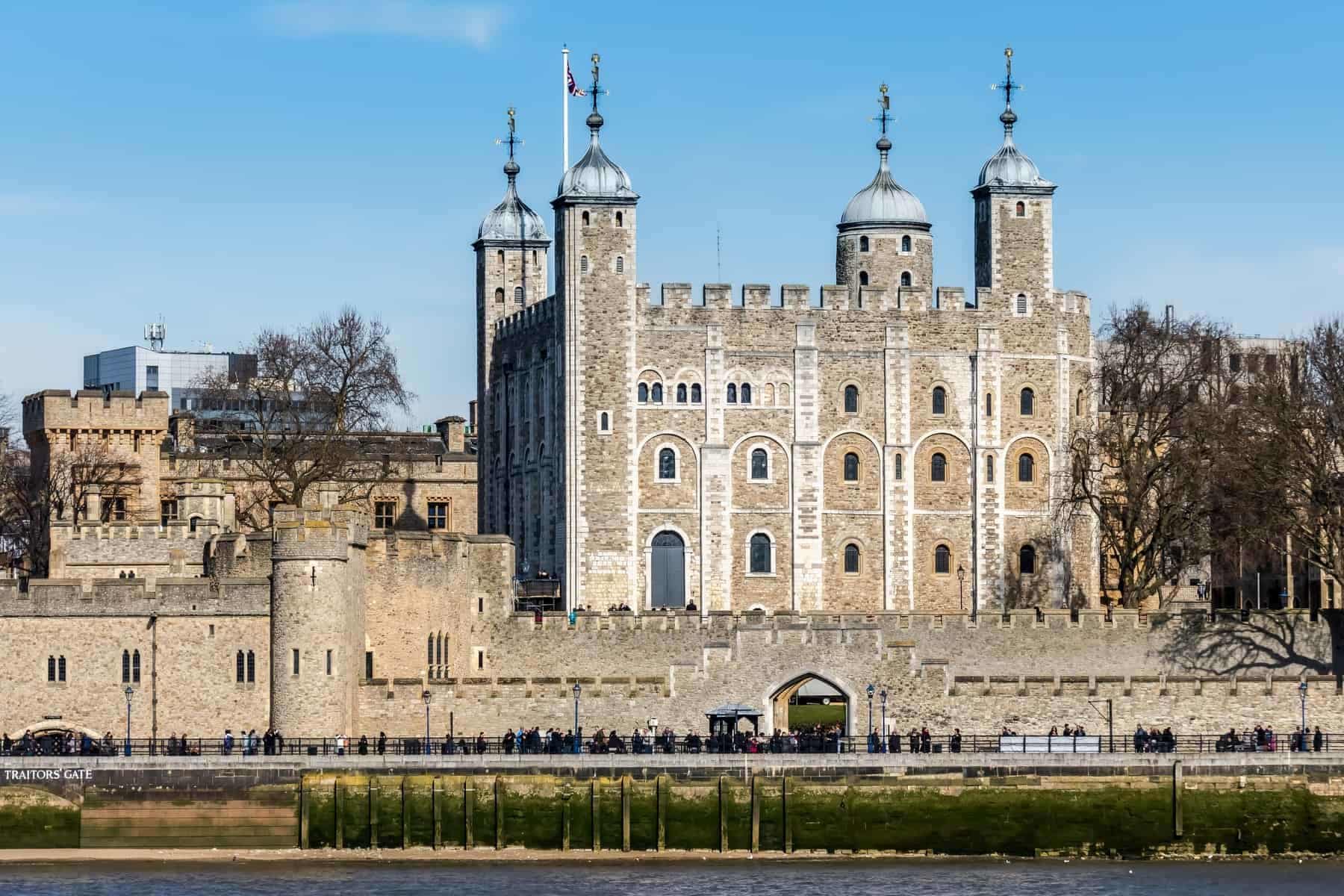
View of the Tower of London on March 7, 2015. Unidentified people.
Tower of London
As one of the capital’s most enduring attractions and most recognizable castles in all of England, the Tower of London has a place at the heart of the city’s long and intriguing history. Tourists have been drawn to the Castle’s thick walls for centuries and the fascinating stories found within ensuring it will remain beloved for years to come.
The Tower of London is perhaps one of the most famous tourist attractions in London. Over 900 years old, work was started by William The Conqueror in the 1070s. Its main role was as a stronghold, and it continued in this capacity until the 1800s. Added to over the years, by 1350 it had become the building we recognize today.
During any visit to the Tower, there are eight sights you must ensure you visit:
The White Tower
The White Tower is perhaps the most distinctive of the Tower’s features and is one of the most famous Castle keeps in the world. Make sure you look out for Henry VIII’s suits of armor and the eleventh century chapel of St John the Evangelist
The Crown Jewels
Make sure you visit the world-famous crown jewels; you will never see so many diamonds again in one place! The Imperial State Crown alone is made up of 2,868 diamonds, 273 pearls, 17 sapphires, 11 emeralds, and 5 rubies. Find out how Colonel Blood almost got away with the jewels in a daring robbery in 1671.
The Fortress
Walk the battlements and imagine yourself as a medieval archer defending the walls.
East Wall Walk
Walk the massive inner wall and explore the four towers that make up the corners, the Constable Tower, the Martin Tower, the Salt Tower, and the Broad Arrow Tower. See the graffiti scratched onto the walls by hapless prisoners hundreds of years ago. Visit the exhibition in Constable Tower that tells the story of the only time that the Tower of London’s defenses were ever breached, during the Peasant’s Revolt of 1381.
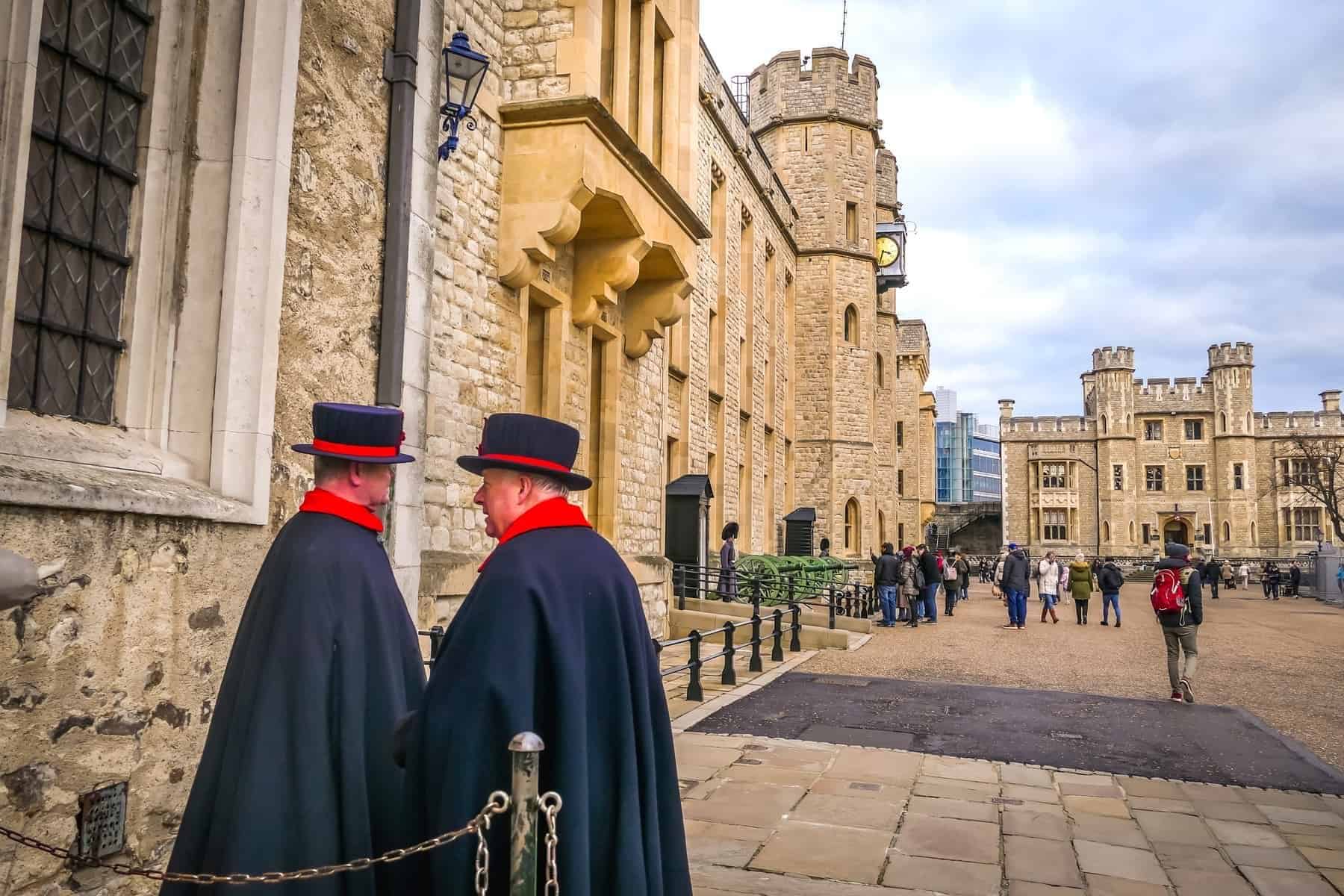
Two Yeomen Warders at Tower of London. Yeomen Warders also known as Beefeaters are ceremonial guardians of the Tower of London. Her Majesty’s Royal Palace and Fortress the Tower of London in London.
Yeoman Warders
More commonly known as Beefeaters and instantly recognizable they are one of the proud symbols of The Tower; they have formed the King’s bodyguard since 150
The Ravens
Forever sinister, it is said that if the ravens ever leave the Tower of London both The Tower and the kingdom will fall. Luckily the ravens are still there…
Tower Green
See the exact spot where some of the most famous people in British history were beheaded; Henry VIII was a frequent visitor with his wives, only they stayed there!
The Medieval Palace
See where medieval kings and queens stayed during their visits to the Tower, the rooms have been kept furnished in exactly the same way as they would have been hundreds of years ago.

Highclere Castle
Secrets of Highclere Castle is the true story of one of the world’s most famous homes, Highclere Castle in England. It is probably exactly the way most people picture iconic Castles in England. The Elegance the glamour, the richness, the upstairs and downstairs strict hierarchy. Famous as the location backdrop to the hugely-popular costume drama “Downton Abbey,” the Castle also has its own extraordinary tales to tell.
Thanks to the shooting of Downton Abbey, the TV series. at Highclere Castle and now the movie also, the Victorian-era house has become a full-blown prime-time star. See our story about the series and Movie (trailer)
For centuries it has been the real-life home of the aristocratic Carnarvon family and has entertained Kings and Queens of England along with a host of nobilities and celebrities. An ancestor of the modern-day Lord and Lady Carnarvon bankrolled the expeditions that discovered the tomb of Tutankhamen, which explains one of this stately home’s astonishing secrets.
Hidden within secret compartments in its wall are centuries-old Egyptian relics, while in the basement are replicas of the contents of the tomb itself: a slice of Egyptian history transported to the depths of the English countryside.
Visitors can peek inside 12 different bedrooms in the house as well as a number of staterooms, including the library and the drawing-room, which fans of the Downton Abbey series will undoubtedly recognize. Photographs are not allowed here.
Highclere Castle is an amazing and magical place.
Read more about Highclere Castle
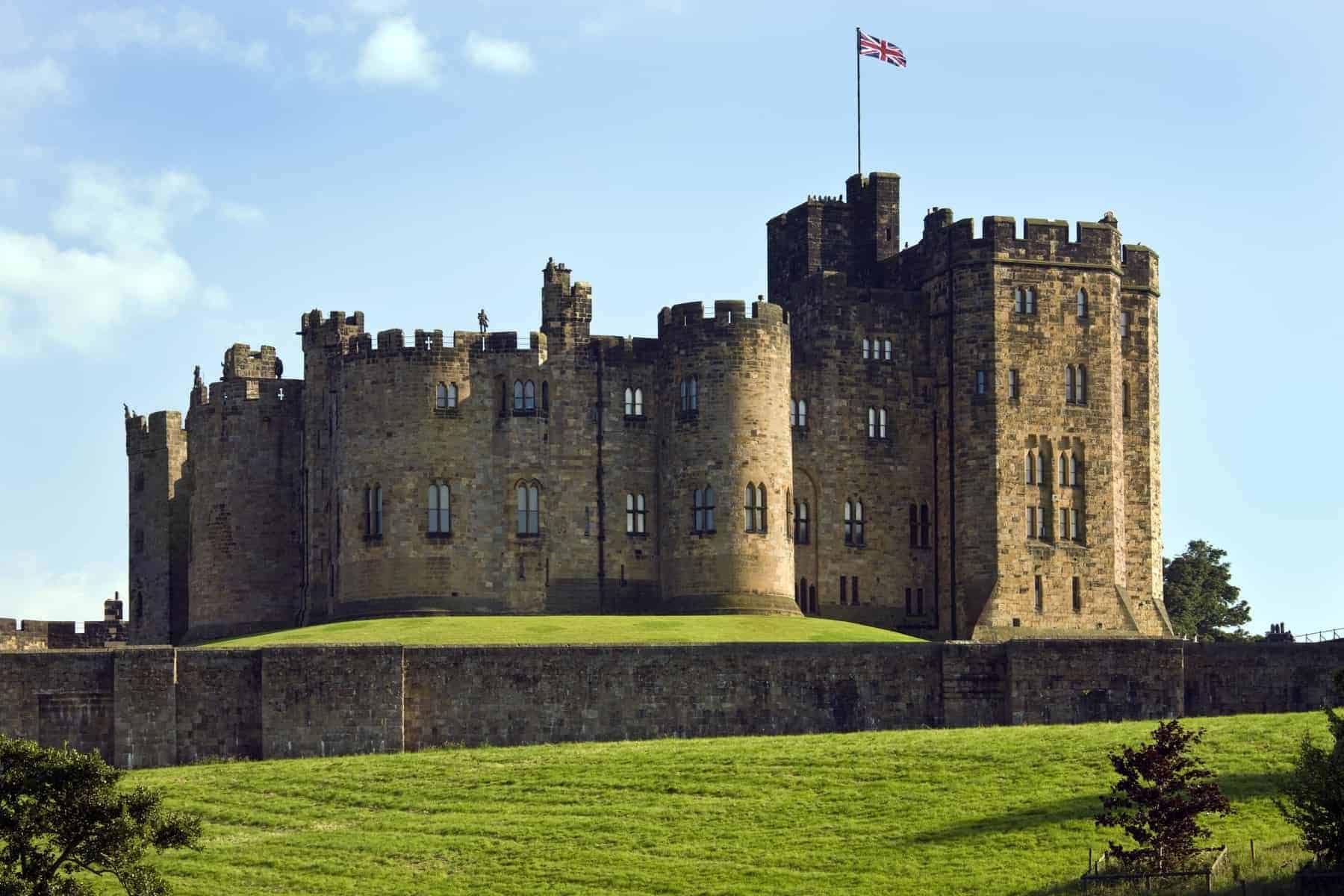
Alnwick Castle in the town of Alnwick in Northumberland in North East England. Dates from 1096AD when Yves de Vescy became Baron of Alnwick and erected the earliest parts of the castle. Since 1309 the castle has been in the hands of the Percy Family who are the Dukes and Earls of Northumberland.
Alnwick Castle
This iconic, 1,000-year-old medieval castle is one of the film industry’s favorite sites, especially for Harry Potter’s Hogwarts site. It is also on the UNESCO World Heritage Site list.
This picturesque castle is one of the most iconic in Britain. It has made appearances in famous movies and television dramas such as Elizabeth, Prince of Thieves, the Downton Abbey Christmas Special and his most famous role as Hogwarts School of Witchcraft. in the first two Harry Potter movies.
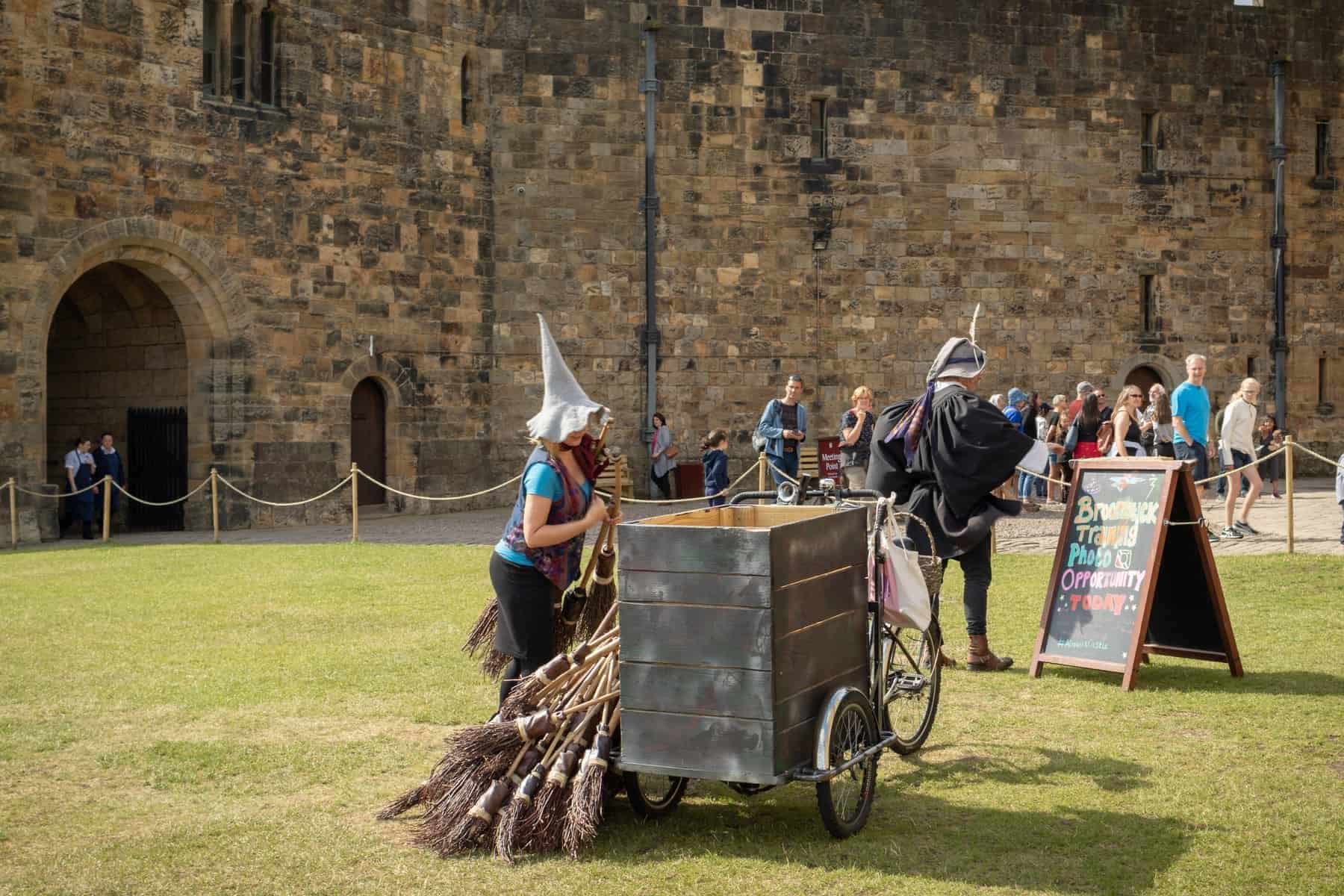
Alnwick Castle – broomstick training sessions inspired by Harry Potter movies. Training at the same spot as Harry Potter had a lesson in the movie.
Called the “Windsor of the North,” Alnwick Castle is the second largest inhabited castle in the country. It houses the family of the Duke of Northumberland, the Percys, for over 700 years.
Combining magnificent medieval architecture with sumptuous Italian rooms, Alnwick Castle is one of the most important heritage destinations in the UK and is the best choice for spending the day in Northumberland.
The rich history of the Castle is full of dramas, intrigues, and extraordinary people; from a gunpowder tracer and visionary collectors to decadent hosts and the most famous knight of medieval England: Harry Hotspur.
Take a free tour with our experienced guides and take in the tumultuous Norman past of Alnwick Castle and its remarkable family history. These educational and engaging guided tours refer to the Castle’s long history, origins, uses, and restorations, and include stories of fascinating characters whose presence has honored Alnwick Castle over the past 900 years.
The sumptuous Italian Renaissance style interiors of the State Rooms are like a jewel in the beautiful, fortified exterior of Alnwick Castle. The Castle converted into a family home by the 1st Duke and Duchess of Northumberland and beautifully restored in the 19th century; these luxurious interiors are a vision to behold.
The public halls house one of the finest collections of private art and furniture in the country, including the works of Canaletto, Titian, Van Dyck, Turner and Dobson; a vast porcelain gallery of Meissen, Chelsea and Paris; and the precious Cucci cabinets, originally created for Louis XIV of France at the Palace of Versailles. From the windows of each room, one can admire the castle park and, beyond, the landscape created by Lancelot’ Capability’ Brown.
Visit Alnwick castle for an exciting day
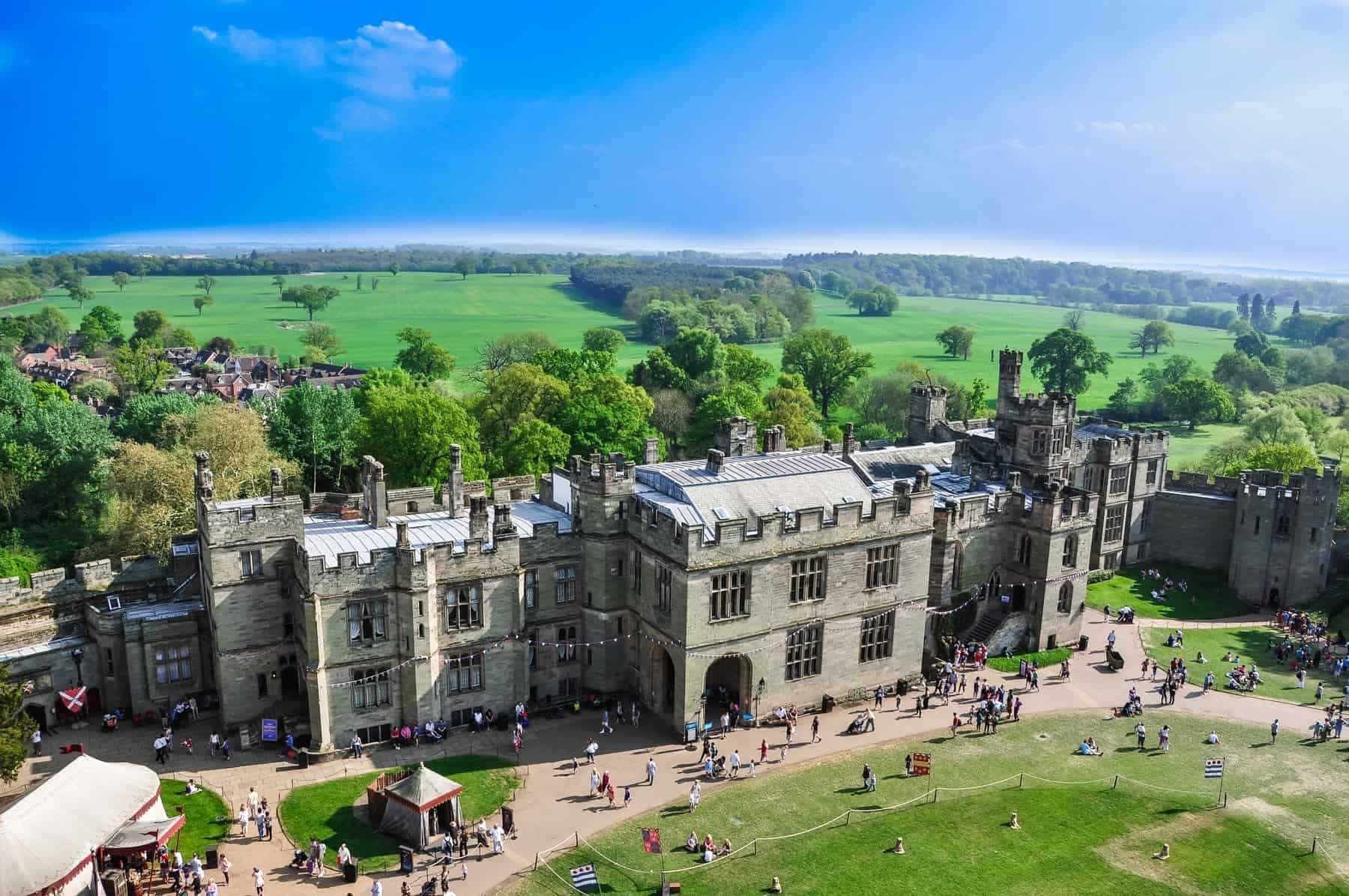
View of Warwick castle on August 5, 2014, in Warwick. Warwick Castle is a medieval castle developed from an original built by William the Conqueror in 1068.
Warwick Castle
Warwick Castle has more than 1100 years of history, magic, myths, and adventures to show you.
Warwick Castle is full of things to do inside and out, while rain or shine, there’s something for everyone. Come and enjoy the historical adventure of Warwick Castle!
Royal Weekend Party at Warwick
Fashion, design, and scandal come alive in the old private apartments. Enjoy a re-enactment of times with wax figures from the Castle’s main participants.
Have you ever wondered what a weekend would be like in Victorian high society? Join the Countess of Warwick and her royal guests for one of her sumptuous parties of the weekend.
Kingmaker
Do you want to enter the battle for the King? Discover the sights, sounds and smells of medieval England as you prepare for war alongside Richard Neville, the Kingmaker.
Have you ever wondered how it would be to walk in a battle alongside a medieval army?
Large Room and State Rooms
From a formidable fortress to a magnificent manor house, the Grand Hall and the reception rooms located in the Castle take you on a journey of transformation.
The Castle, The Reasons, and The Attractions
Explore the Castle and immerse yourself in its rich history with amazing attractions and experiences. In summer, wander through the beautifully landscaped gardens and lose yourself in the Labyrinth of Horrible Histories® Maze! On rainy days, why not go to the Princess Tower or face the terrifying castle dungeon.
The Mighty Trebuchet
See the Mighty Trebuchet, the world’s largest active seat machine! Watch with wonder the spectacular spectacle of birds of prey showcase magnificent and powerful creatures – including vultures and eagles flying over the castle walls – and marvel at the agility and power of the bow that resides at Warwick Castle.
The Castle Dungeon
Are you brave enough to enter the castle dungeon? Discover some of the darkest, bloodiest and scariest moments in Warwick Castle’s history, where actors and special effects bring these gruesome stories to life.
Time Lapse
For the first time, immerse yourself in the rich and vibrant history of the Castle. This immersive audiovisual multimedia experience will take you through 1,100 years of bloodshed, death, and betrayal.
History and Restoration of Warwick Castle
Throughout its 11-year history, Warwick Castle has had memorable events. He was attacked, besieged and even damaged by a fire. And yet, it remains solid thanks to the care and restoration of its owners
Food, Drink, and Purchases
With a view of the peacock garden and re-enactment field, the Conservatory Tea House is the perfect place to enjoy a lunch break. Undercroft Restaurant serves fresh pizzas, pasta and salads, while Coach House Restaurant offers a delicious menu of British dishes.
Visit Warwick Castle (Merlin adventures)

Lindisfarne (holy island)
Known simply as the “holy island” by its inhabitants, Lindisfarne is renowned for being one of the centers of early Christianity in England. The Lindisfarne Gospels were produced by the monks of the island between 710 and 725 and are recognized as masterpieces of medieval art. Plundered by the Vikings in 789, the sacking of the priory in which Saint Cuthbert, the patron saint of Northumbria had been abbot, was devastating. In order to protect his Viking invasion remains, they were transferred to Durham Cathedral, where they are still.
Lindisfarne Castle is a jewel. Sitting at the top of Beblowe Hill, 30 m high, on the holy island of Lindisfarne, where there is a shallow tide, it is a castle built on an unusually domestic scale. What makes it so attractive is that it is a castle in which you can imagine living. And what makes it so fascinating is that in 1902, Edward Hudson, founder, and owner of Country Life magazine, decided to do just that.
As a result, what you find today is a remarkable fusion between a Tudor artillery fort and an Edwardian country mansion, a fusion created by the famous architect Edwin Lutyens in the years 1903. The Castle that emerged from this process dominates the island on which he is. it stands, on a broader coastal landscape of Northumberland. Yet it is also a castle that could almost be called cute.
Lindisfarne is a unique place: Lindisfarne is known worldwide for its medieval religious heritage and its picturesque 16th-century Castle, more recent. These, as well as most of the community, are located in the southern part of the island – the main focus of tourists and vacationers. Many are also attracted by the peace and tranquility that permeate the island and the isolated conservation area of the North, with more than its share of quiet beaches and unique natural history.
Lindisfarne has a wide range of visitors that includes: bird watchers, walkers, fishing parties, artists, writers, photographers and filmmakers, historians and nature historians, scientists, journalists, industrialists, politicians, actors, theologians, savages, hunters, golfers as well as thousands of Christian and non-Christian pilgrims.
Lindisfarne Gertrude’s garden
Jekyll was a friend and frequent collaborator of Edwin Lutyens, who had turned the Castle into a vacation home: his name was Jekyll’ Bumps’. Using the site of a vegetable garden that once provided food to the Castle’s soldiers, Jekyll designed a garden – with a wall fallen to the side of the Castle – that would bloom in a shade of color in the summer that the guests of Edward Hudson will be able to admire the Castle. The combination of perennial annuals, colorful perennials, and heritage vegetables offers beautiful images and scents in summer and an oasis of greenery and year-round protection.

Dover Castle, castles in England defending the country
Dover Castle has played an important role in history over many centuries. It all started when a hill fort was established around 800 BC. The lighthouse, the first building on the site of Dover Castle, was built in 43 AD. The castle keep, also known as the Great Tower, was founded by Henry II in the 12th century. Fast forward to more recent times and the Castle was home to some of the most important planning activities of the Second World War.
Dover Castle is located on the iconic white cliffs of Kent, the gateway to the kingdom, for nine centuries. At its heart is the magnificent grand Tower created by King Henry II. Enter this unique medieval palace, take place on the throne of the King and meet characters from the court of Henry II.
The Pharos: It is the oldest surviving lighthouse in Britain and perhaps the world. The Romans arrived in the year 43 and quickly built the lighthouse to guide their compatriots across the country. We can say that this style is Roman. It consists of several layers of round flint sandwiched between two fine bricks or red Roman tiles. There is a low entrance on one side, and you can watch it… one at a time, the Pharos was used as a bell tower for the nearby church. It may sound a little friable, but its shape is remarkable for a 2000-year-old building.
The big Tower: Inside the big Tower, six rooms of the medieval palace have been recreated. A skilled craftsman has created the sumptuous interiors of a palace from the time of Henry II, with wall hangings in bright colors and authentically colored, as well as 500 objects and finely detailed furniture. To keep things real, there are no signs or information boards to read. Instead, audiovisual elements in the rooms guide visitors, and costumed costume managers are available to answer your questions. On selected dates, reconstructed characters with a period character give life to the pieces.
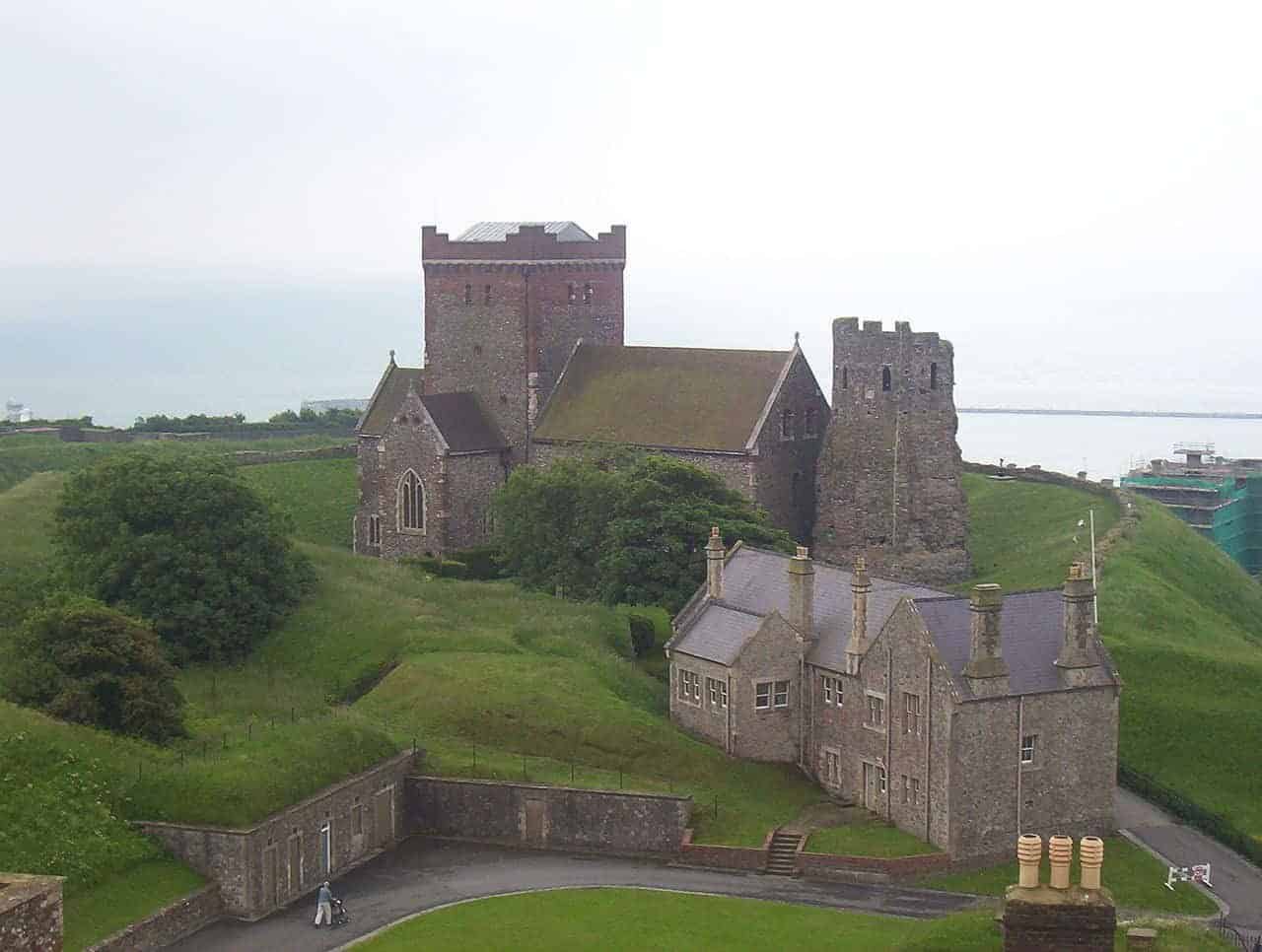
St. Mary in Castro church, Dover Castle, Kent, UK
The Church of St Mary in Castro
Next, to the Roman lighthouse of Pharos, you will see the Church of St. Mary of Castro, which dates back to the year 1000 AD. Unfortunately, it was in ruins and roofless in 1720, but fortunately, it was restored as a garrison church in 1826 by Sir George Gilbert Scott. The Tower was completed only in 1888 when the sacristy was added.
Inside the church, the thing that struck me most was the tiling of the walls. We sat in the benches for a few minutes to admire and let our feet pause. I was impressed by the restoration work, it was hard to say what was “new” and what was not.

Visit The Church of St Mary in Castro
Secret war tunnels at Dover Castle
The secret war tunnels were the headquarters of Operation Dynamo, which had rescued more than 330,000 Allied soldiers from Dunkirk Beach in France. The tunnels were actually built during the Napoleonic period. You can visit the tunnels only by a guided tour. I recommend that you get there early the day before the line is too long.
Once you enter the tunnels, you just have to go down a downhill path to get to the main sections. The visit lasts about an hour. You visit several different rooms where you will find videos to watch to help you learn a little more about the story.
To exit the tunnels, use the spiral staircases or an elevator is available to visitors with reduced mobility.
Medieval Tunnels
Unfortunately, we did not have the chance to see the medieval tunnels. They are located on the other side of the Castle compared to other tunnels. These tunnels were built for the first time after Prince Louis of France besieged the Castle in 1216. Other tunnels in this part of the Castle were added later, but they are still known as medieval tunnels.
There is no exposure in these tunnels, and it remains almost as it is. You know that these tunnels were used for the defense of the Castle when you see all the cannons. It’s dark in some places. So be prepared to use your mobile phone as a flashlight.
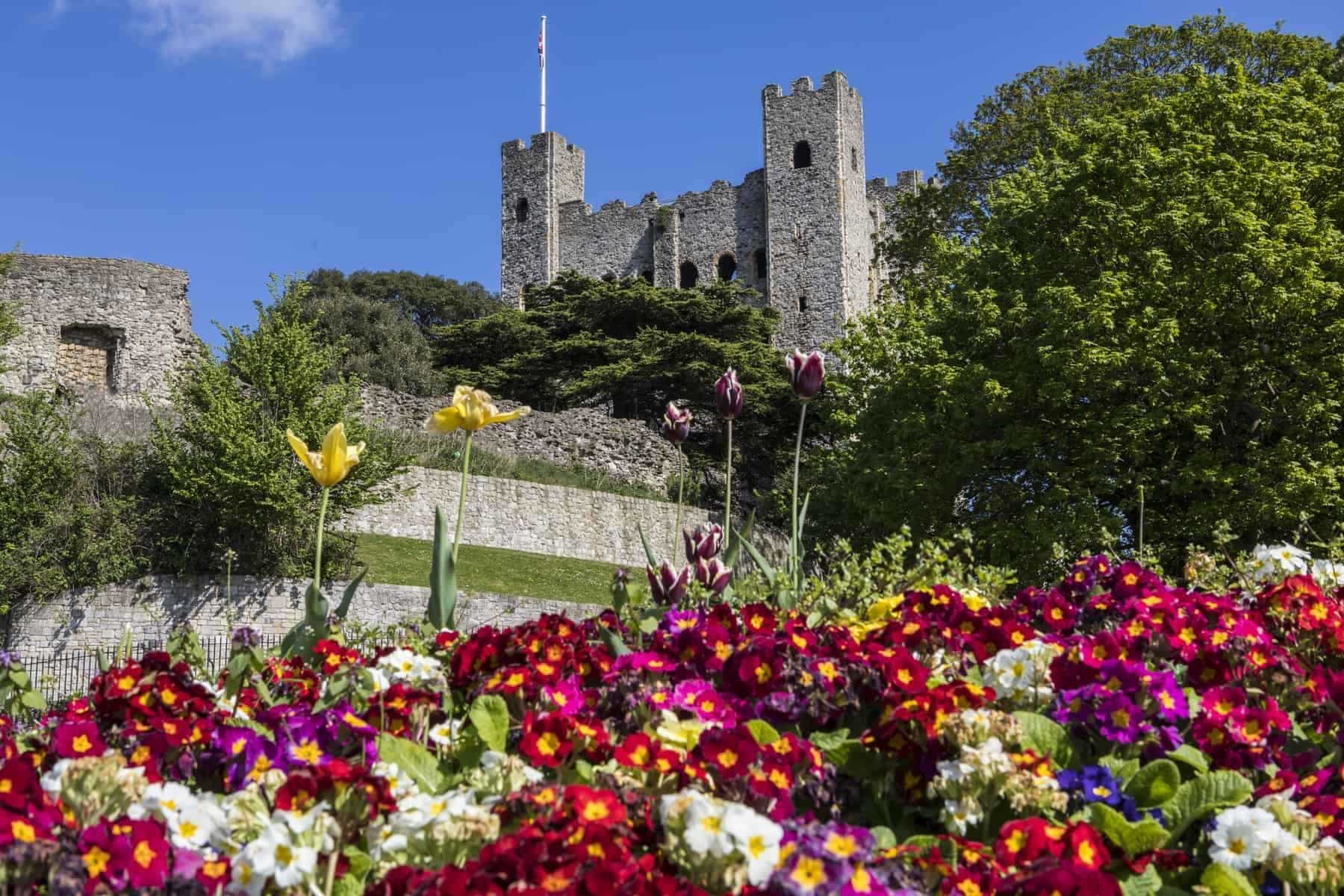
A view of Rochester Castle with beautiful flowers in the foreground, in the historic city of Rochester in Kent, UK.
Rochester Castle. Castles in England from the Norman era
Strategically placed on London Road, protecting an important crossing of the Medway River, this imposing fortress has a complex history of destruction and reconstruction. Today local people proudly recall the history of Rochester, as well as the cathedral and the cobblestone streets.
Its Norman* Kentish cobblestone tower was built around 1127 by William of Corbeil, archbishop of Canterbury, with the encouragement of Henry I. Composed of three floors above a basement, it rises 23 meters high. Attached is a protruding high building with its own defenses to cross before the dungeon itself can be entered on the first floor.
In 1215, the Castle underwent an epic siege by King John. First, having sapped the outer wall, John used the fat of 40 pigs to mine beneath the dungeon, dropping his southern corner. Even then, the defenders held on until they were finally starving after having resisted for two months.
Rebuilt under Henry III and Edward I, the Castle remained a viable fortress until the sixteenth century.
It is a region rich in history with some interesting attractions less than a mile from the Castle, including:
Upnor Castle: Elizabethan Artillery Fort Built to Protect Chatham Shipyards
Historic Chatham Shipyards: The home of shipbuilding for hundreds of years. Where some of the most historic ships of the British navy have been built. Do not miss the one-kilometer long “rope ride” in the rope that still works. Charles Dickens Sr. worked there as a clerk.
Rochester Cathedral: The second oldest in Britain.
Royal Engineers Museum: Three hundred years of military engineering history – in Africa, India, and Europe – are remarkably interesting. You can tell your friends at home that you saw the Duke of Wellington’s field notes and map for the Battle of Waterloo.
*The Normans built so-called motte and bailey castles, to begin with. These English castles were quick to build using just earth and timber. Later on, when William the Conqueror, the leader of the Normans, had firmly established his rule in England, the Normans built huge stone keep castles.
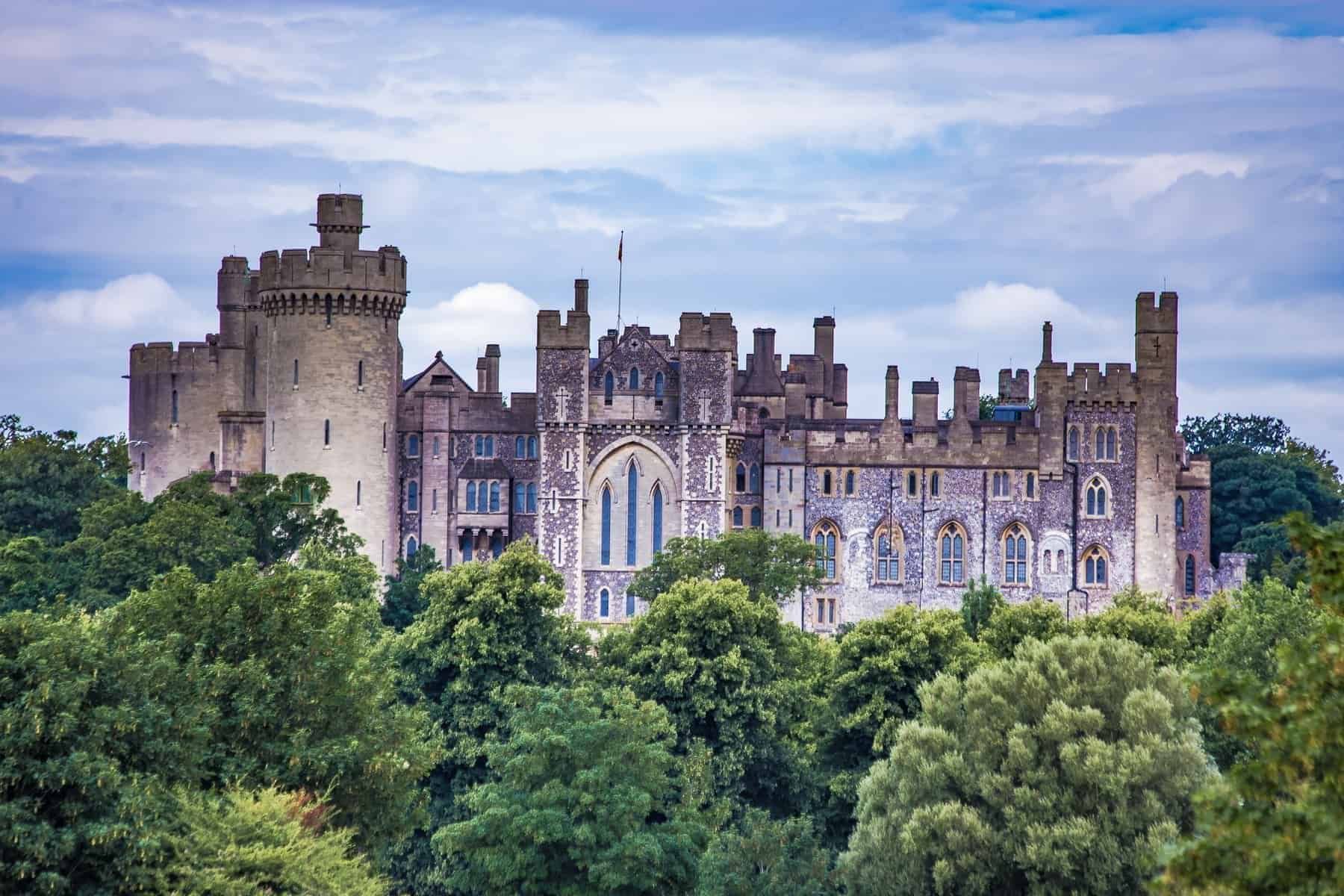
English old castle Arundel Castle River Arun West Sussex England
Arundel, the 1000 years history for the castles in England
Arundel Castle is an excellent example of earlier castles in England, and it is one of the longest inhabited homes in the UK. Its history goes back nearly a thousand years. The dungeon was built in 1068 on top of an artificial mound and has been enlarged and restored over the centuries.
Arundel Castle has housed very influential families. Not less the Dukes of Norfolk, to whom the Castle still belongs today.
Arundel Castle is rare because it contains a bit of everything. It is a medieval keep where Empress Mathilde stayed. It has huge turrets with arrow-shaped windows and battlements at the top of its walls. Inside, beautiful rooms filled with treasures accumulated over the years give the impression that it is more a manor house than a castle. Everyone will find happiness, be it glittering golden treasures, lion skins, stunning architecture, or the fabulous art collection.
The gallery presents magnificent stained glass windows representing various symbols and scenes. The gallery presents a rare collection of works by renowned artists, such as Van Dyck.
The chateau rooms on display showcase the most popular and used rooms of Arundel Castle. Visitors have the opportunity to explore the Victorian rooms and bathrooms that housed hundreds of years of royalty.
The Fitzalan Chapel was founded by the 4th Earl of Arundel in 1390. The Fitzalan Chapel still serves as a burial place for the Dukes of Norfolk. This Gothic architecture features a finely carved wooden roof and finely detailed choir stalls. Since the Fitzalan Chapel did not officially participate in the formation of the Protestant parish church, the chapel is Catholic.
The gardens have been open to the public since 1854. The gardens are a comprehensive collection of various internationally renowned gardens, such as Collector Earl’s Garden and Organic Kitchen Garden. Because gardens are relatively protected, rare, and unique plants that require special and intensive care may flourish in the gardens.
Having now a hopefully better impression of why to visit the castles in England, perhaps you would like to see how history has grown other equally amazing castles, yet different in other European countries.
Visit other castles all over Europe
- Famous castles in England, including Windsor, Dover, Highclere
- Highclere and Downton Abbey, the series and now the film
- Scotland and its huge selection of austere, impressive or fairytale like castles
- Most amazing castles in France including Versailles
- Royal Castles in Italy
- The crown, where was it filmed?
- 10 majestic castles in Germany
Late 2021: the uk open to tourism again for many countries
https://vacationtalks.com/uk-close-to-completely-open-to-tourism/




